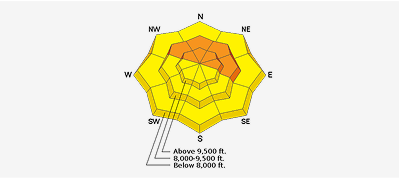There didn’t seem to be much of an overnight refreeze in most areas. At upper elevations, clear skies may have allowed for a superficial refreeze, but it was minimal. My expectations were low, but a light breeze likely helped keep the snow supportable later into the morning than anticipated.
The primary hazards we encountered were poor conditions and calving cornices. Overall, avalanche danger appeared to be LOW. However, if we see cooler temperatures and increased wind speeds, slide-for-life conditions could start to come into play.
We only saw evidence of recent wet-loose avalanches and couldn’t get the snow to move or even pinwheel.
When we dug into the snow, we found a supportable ice crust about 30 cm down. This seems to be the layer where most of the water is pooling—and the depth our skis and boards were punching through once the superficial freeze gave out.
Shallow snowpit - NW Aspect - 10,000 - crust 30 cm down
Recent wet-snow activity - West






